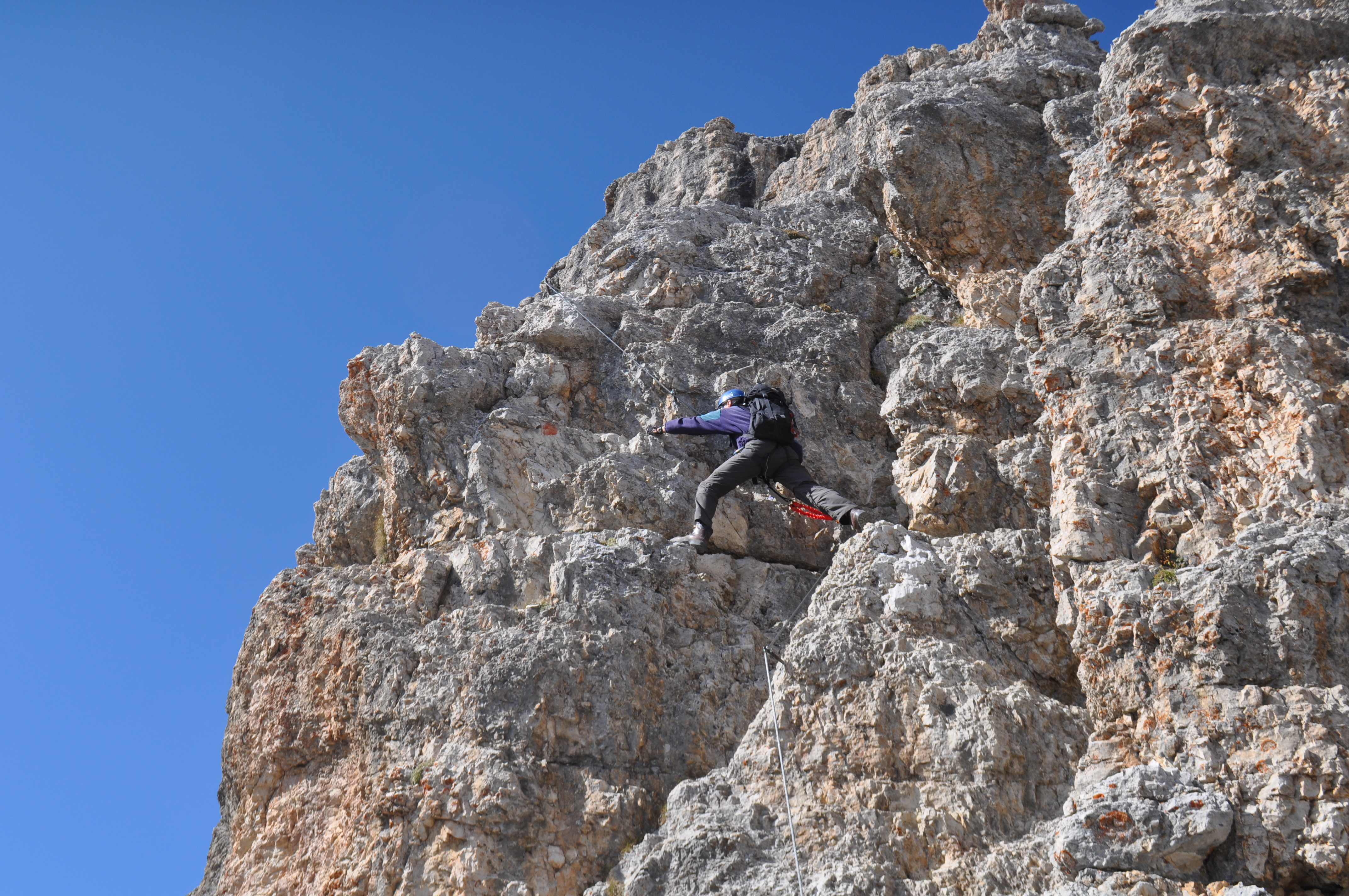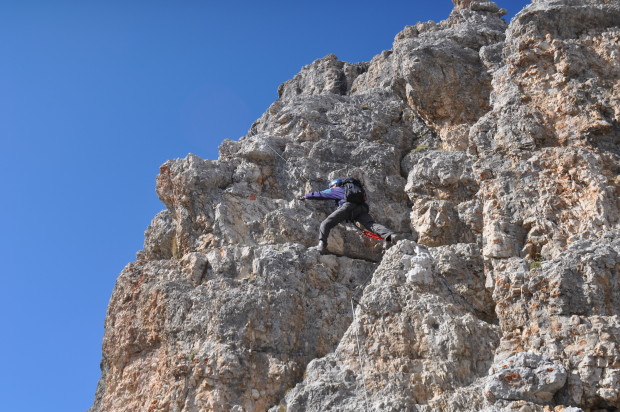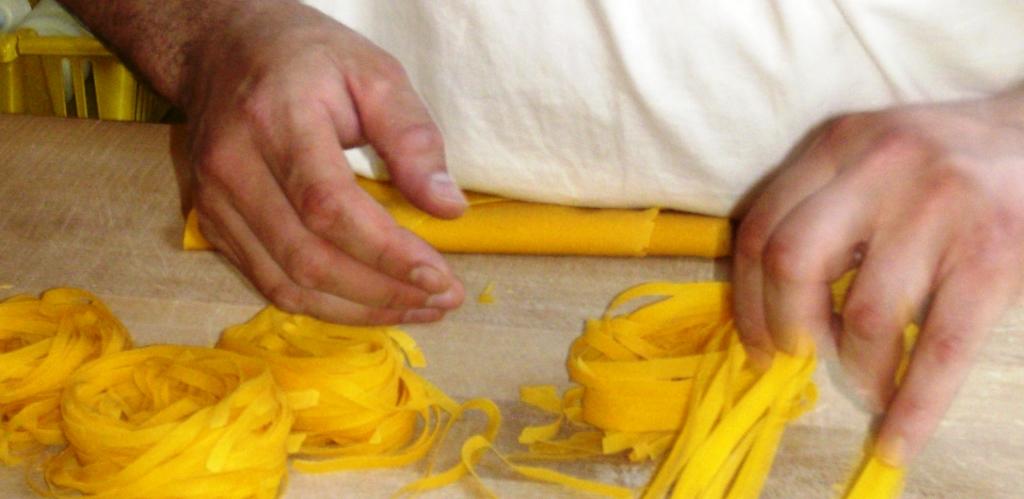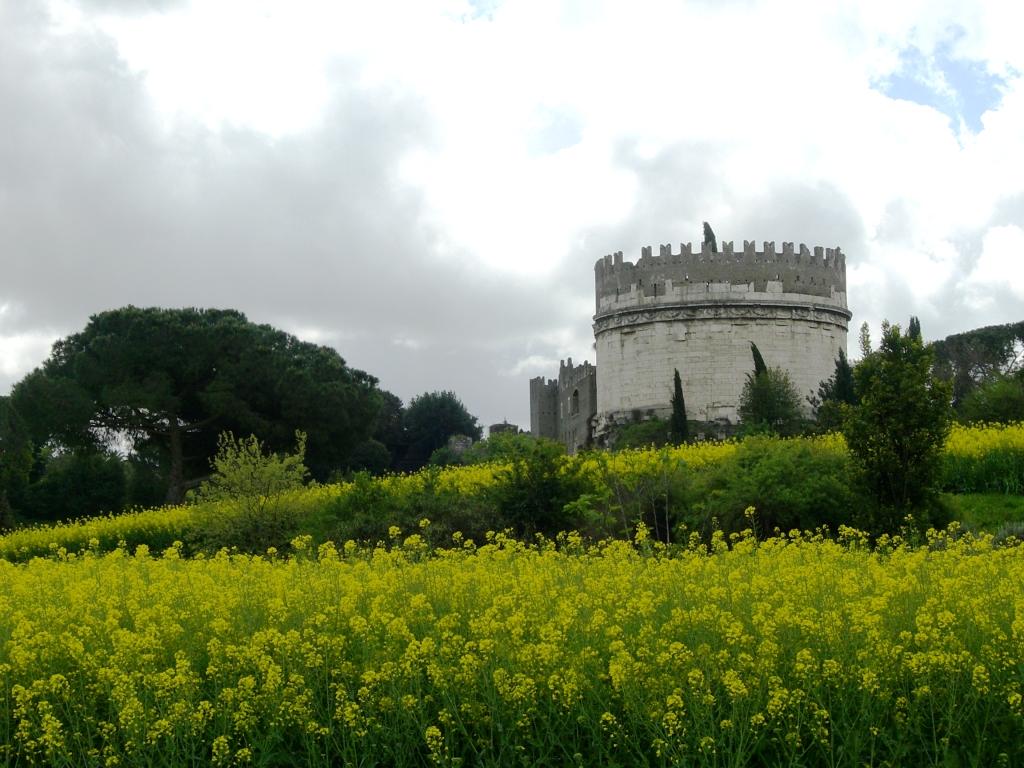I am not sure if I can do this.
We have taken the ski lift up, above the treeline, and we are climbing toward a seemingly vertical — and impenetrable — wall of rock. I’m wondering where the route is. Two other climbers have passed us with a cheerful “buongiorno.” To my horror, their bright jackets shortly appear against the wall and show me exactly where we are headed: Simply, directly: Up.
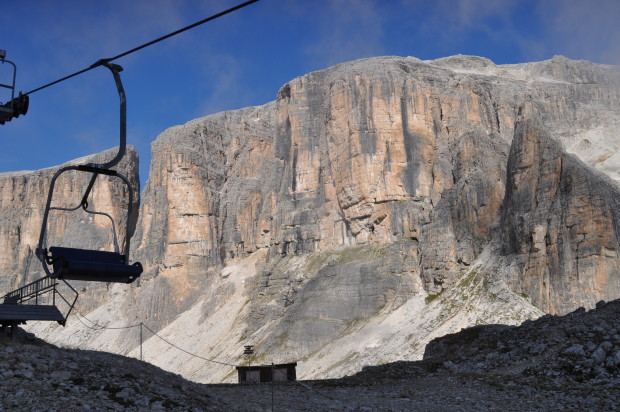
I tend to be confident about physical challenges, but this time I may have bitten off more than I can chew. Mickey, my guide, doesn’t seem fazed about my prospects. We’ve spent two days together on easier trails — easier, but steep and exposed enough to have via ferrata cables on them — and he’s noted that I’m comfortable with rock and exposure. This climb was his recommendation. But I’ve never climbed anything so steep before.
In Your Bucket Because…
- The Italian Dolomites are some of the most beautiful mountains on earth.
- It’s a safe way to experience the thrill of rock climbing, especially with a guide.
- You will totally earn your Italian dinner. And you won’t have to worry about gaining weight.
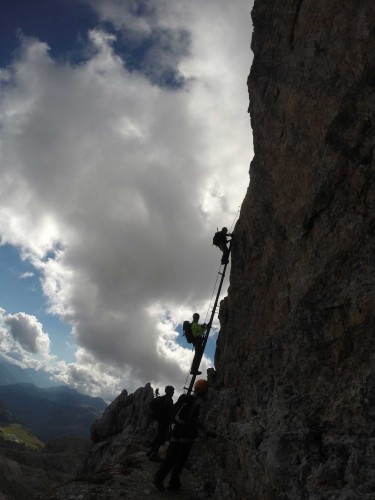
At least no one will be shooting at me.
That’s not hyperbole: 100 years ago anyone trying to scale these mountains would have been dodging bullets along with errant bits of scree. The via ferrata — literally, the iron ways — are recreational climbing routes today, but they are the great-grand-children of climbing routes and aids that were put here by soldiers during World War I.
The Dolomites were ground zero of the Austro-Italian front, the site of a brutal two-winter-long war during which Italian and Austrians, some from neighboring villages, shot at each other, froze to death wearing ridiculously insufficient clothing, and tried to blow the mountains down under the feet of the enemy that held the high ground.
The previous day, we had descended from the former Austrian fort of Lagazuoi by climbing down inside he guts of the mountain in tunnels that had been blasted by Italians hoping to blow Austrians off the summit. Walking the trails near the rifugio at the to the top, we’d passed the remains of redoubts and shelters, some with World War I litter — remnants of wire, scraps of rusted metal, bits of furnishings. Some of the rooms carved into the mountain were kept in situ as an outdoor museum (There’s also a standard-issue indoor museum at the Tres Sassi fort near the base of the mountain). Susi, one of the guides of the trekking group I was loosely traveling with, told me it was common to find bits and pieces of uniforms, mess kits, and munitions throughout these mountains. Every once in a while, news reports announced the discovery of human remains.
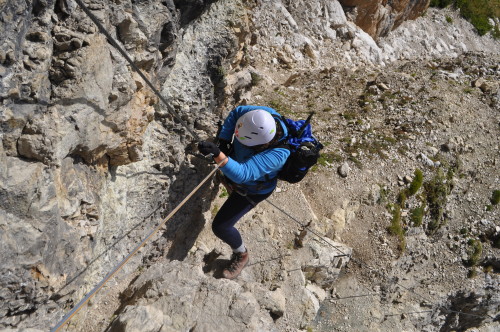
Today, I’m on a recreational climb. After the war, Italian climbers used what was left of the military climbing aids, and then started improving them. Today, there are more than 170 via ferrata, with ladders, cables, and metals bars bolted into the mountains at a range of difficulty levels ranging from “barely harder than hiking” to “my god, what have I gotten myself into.The route up Piz da Lech, a thousand foot ascent, is rated intermediate, although to my inexperienced eye, it doesn’t look it. We arrive at the first pitch and Mickey scrambles up, nimble as a goat. I look at where he put his feet and his arms, and it simply seems physically impossible. I try one way and then another, hurling myself at the rock, trying to use energy and momentum for what I lack in skill. I fall back enough times to wonder: Will I even make the first pitch? And if I do, what about the second and the third — 1000 feet of pitches. Will I have the strength? And if not, then what happens? If I can’t go all the way up, how do I get down?
And then somehow, my foot finds the right place, and my fingers get a solid grip, and my muscles work with each other and the rock, and there I am: 10 feet up. 990 feet to go.
Slowly, I learn the basics. First, changing my caribiners one at a time so I am always connected to the cables. I am also being top roped by Mickey, because he doesn’t know how I’ll do (and given my struggle on that first pitch, I’m thankful for the extra security). I learn to use the pressure of my arms and legs, not only pushing up and down, but side to side as well to get support from the mountain. It’s a three-way dance, gravity, the rock, and me. It’s not a wrestling match. I start to feel a bit lighter.
We climb higher: Up a ladder that feels vertical, but isn’t, up walls of rock with ledges and crags and footholds. Random thoughts slip away; until there is only the rock, and my movement, and the light of some of the most beautiful mountains on the planet.
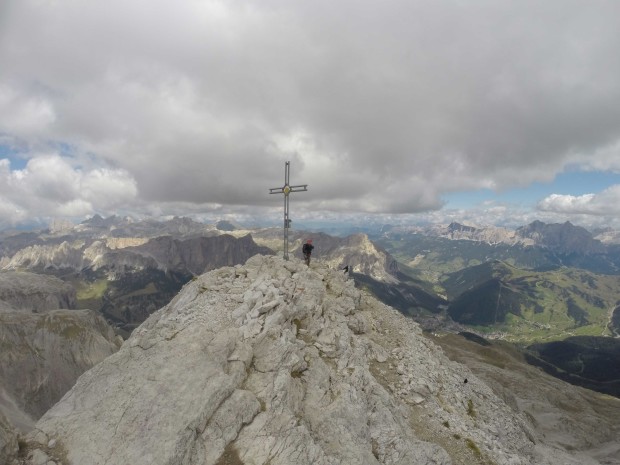
And no one is shooting at me.
Practicalities
- Trekking shoes are actually better than hiking boots: They have more flexibility and better grip.
- Bring climbing gloves. The rock and cables will cut and blister your hands.
- Hire a guide if you’ve never done via ferrata before: There are skills to be learned, and the extra security of being on belay is a good thing for beginners.
- Figure four or five hours, depending on your climbing skill and fitness.
- The guide service I used and highly recommend was Holomites, which runs trekking, running, skiing, and climbing trips in the Dolomites.
[mappress mapid=”904″]
